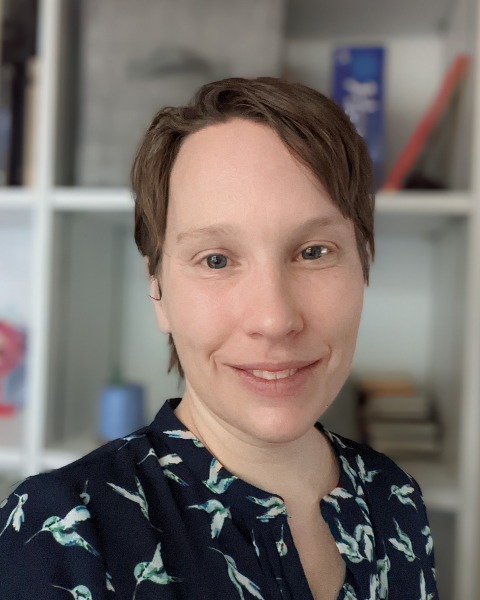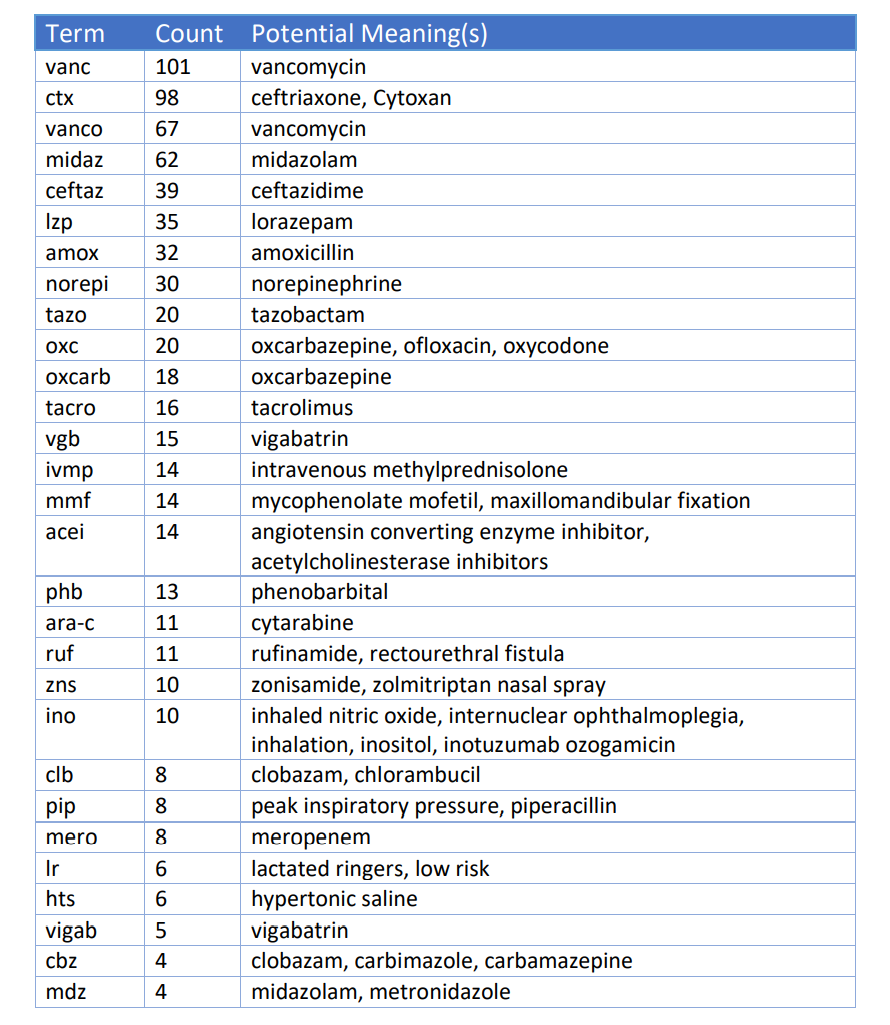Telemedicine/EHR/Medical Informatics
Category: Abstract Submission
Telemedicine/EHR/Medical Informatics II
305 - Targeting Abbreviated Medication Names with the Power of NLP: Proof of Concept
Sunday, April 24, 2022
3:30 PM - 6:00 PM US MT
Poster Number: 305
Mara Alexeev, Boston Children's Hospital, Brookline, MA, United States; Amir Kimia, Boston Children's Hospital, Boston, MA, United States; Marvin B. Harper, Harvard Medical School, Boston, MA, United States; Assaf Landschaft, Boston Children's Hospital, Bergisch Gladbach, Nordrhein-Westfalen, Germany; Al Ozonoff, Harvard Medical School, Boston, MA, United States

Mara Alexeev, MD, MPH
Clinical Informatics Fellow
Boston Children's Hospital
Brookline, Massachusetts, United States
Presenting Author(s)
Background: According to The Joint Commission recommendations, medication names should not be abbreviated as misinterpretation may lead to administration of incorrect medication.
Objective:
Identify abbreviated medication names (AMNs) in a first step towards elimination.
Design/Methods:
Retrospective chart review of pediatric ED consult notes at a tertiary pediatric center in 2019. We targeted consult notes due to potential differences in expertise between the documenting and reading providers. AMNs were identified using 2 NLP methods: a) named-entity recognition (NER) and b) Regular Expressions (RegEx). The NER model was a pre-trained model called MED7, identifying 7 categories: drug names, route of administration, frequency, dosage, strength, form, duration. We fine-tuned the model on a small sample of annotated documents from our hospital. RegEx to identify strings likely to be medications given surrounding text context. The abstracted lists were then matched against both generic and commercial medication names using the following lists: RxNorm, National Drug Code Directory (NDCD). The remaining terms were then sorted by frequency, and the top 2,295 were reviewed.
Results:
There were 29,877 consult notes available for review. We narrowed the corpus of documents to services more likely to prescribe medication (endocrinology, cardiology, neurology) and eliminated those services where medication treatment is a smaller part of their practice (orthopedics, urology) leaving 16,010 notes for review.
We identified 8,288 unique medication terms using NER and 2,671 using Regex. The union of the two lists of medications had 9,541 unique medication terms. After cross referencing against RxNorm and NDCD 7,248 unique medication terms remained. After reviewing all terms occurring 2 or more times, a subset of terms, which were identified by an author as likely AMNs, was curated and is presented with frequency counts in Table 1.
Conclusion(s): NLP provides a novel approach to establish libraries of AMNs to be eliminated from EHR documentation. Future studies should include domain-expert champions who will help interpret domain-specific expressions beyond the expertise of the informatician.
Table 1 Selected Top Medication Abbreviations
Selected Top Medication Abbreviations
Objective:
Identify abbreviated medication names (AMNs) in a first step towards elimination.
Design/Methods:
Retrospective chart review of pediatric ED consult notes at a tertiary pediatric center in 2019. We targeted consult notes due to potential differences in expertise between the documenting and reading providers. AMNs were identified using 2 NLP methods: a) named-entity recognition (NER) and b) Regular Expressions (RegEx). The NER model was a pre-trained model called MED7, identifying 7 categories: drug names, route of administration, frequency, dosage, strength, form, duration. We fine-tuned the model on a small sample of annotated documents from our hospital. RegEx to identify strings likely to be medications given surrounding text context. The abstracted lists were then matched against both generic and commercial medication names using the following lists: RxNorm, National Drug Code Directory (NDCD). The remaining terms were then sorted by frequency, and the top 2,295 were reviewed.
Results:
There were 29,877 consult notes available for review. We narrowed the corpus of documents to services more likely to prescribe medication (endocrinology, cardiology, neurology) and eliminated those services where medication treatment is a smaller part of their practice (orthopedics, urology) leaving 16,010 notes for review.
We identified 8,288 unique medication terms using NER and 2,671 using Regex. The union of the two lists of medications had 9,541 unique medication terms. After cross referencing against RxNorm and NDCD 7,248 unique medication terms remained. After reviewing all terms occurring 2 or more times, a subset of terms, which were identified by an author as likely AMNs, was curated and is presented with frequency counts in Table 1.
Conclusion(s): NLP provides a novel approach to establish libraries of AMNs to be eliminated from EHR documentation. Future studies should include domain-expert champions who will help interpret domain-specific expressions beyond the expertise of the informatician.
Table 1
 Selected Top Medication Abbreviations
Selected Top Medication Abbreviations